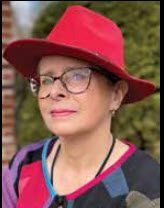 By: Ali Elizabeth Turner
By: Ali Elizabeth Turner
In 1924, George Gershwin wrote one of the most recorded, reworked, and recognizable pieces of American music ever, and it is called “Rhapsody In Blue.” (Just think the music that served for years as the backdrop for the television commercial for United Airlines and you have a taste of it.) George had talked about the possibility of writing a work for a concert being put together by a man named Paul Whiteman that was designed to introduce America to what was then called “modern music.” However, he never actually agreed to do it. His brother, Ira, happened to see a piece in the paper that talked about a work that was being specially composed by George for the concert, and George had no choice but to either get it ready, or eat a whole lot of crow.
George got to work, and had the entire thing ready to go in six weeks. Interestingly, it was the trip on the train between New York and Boston that inspired him. He could “hear” music in the train tracks, the rhythm of the cars as they clackety-clacked down the line, and provided a whole set of sequences for a piece that famed New York Philharmonic conductor Leonard Bernstein, played, adored, and described as follows:
The “Rhapsody” is not a composition at all. It’s a string of separate paragraphs stuck together — with a thin paste of flour and water.
Be that as it may, it is a remarkable piece of music. It is fantastically difficult to play. It is tender, it is wild, it is frantic, and it’s contemplative. It can be played by one pianist; two pianists on two pianos; a small jazz group; what is known as a pit orchestra (which is what is used for things like musicals and ballets); and a full symphony orchestra. Hands become a blur if you watch any videos of a performance, and if the camera is filming from overhead, it is dizzying.
If you use any type of instrumental support for “Rhapsody,” the opening sequence, which is typically performed by a clarinet, presents notes that can only be described as “bent,” yet there is nothing unpleasant or discordant about them. I used to think that one had to have large hands in order to play it until I saw a video performance of a small female Chinese concert pianist by the name of Yuja Wang that is truly mind-boggling. It has been called a “messy masterpiece” by some, a description I find most fitting.
“Rhapsody” has known its share of controversy. Some object that it was a white Jewish guy who wrote it, and that it only gained acclaim because it was performed for the first time at a venue that was largely white. By contrast, Ella Fitzgerald loved all things Gershwin, and many black artists outright reject the allegation of “cultural appropriation,” as it pertains to Gershwin’s works of genius. I think it’s safe to say that few were as gifted as Gershwin when it came to putting the melting pot that is America squarely in the purview of the 88 keys that make up a piano, and I am so glad that he did. Happy birthday to you, “Rhapsody In Blue”…and here’s to a 100 more!







